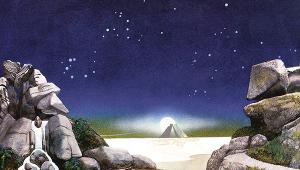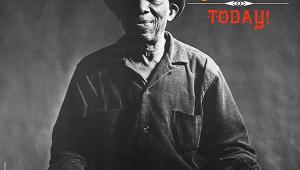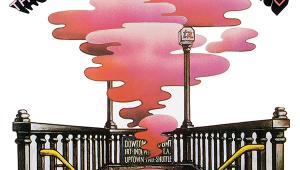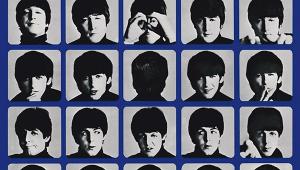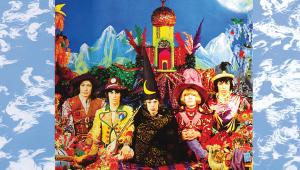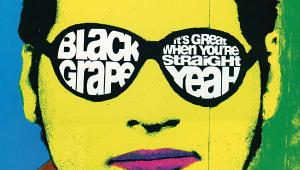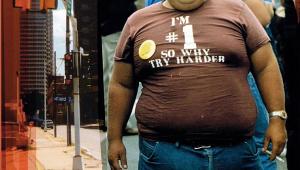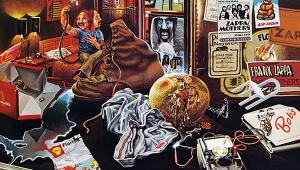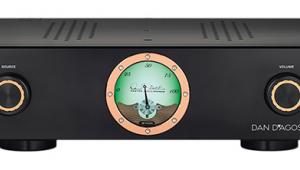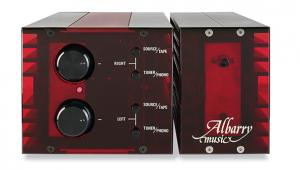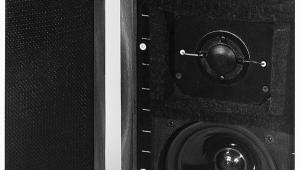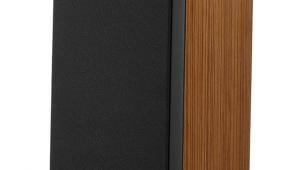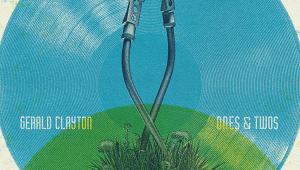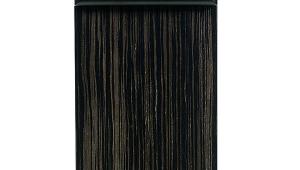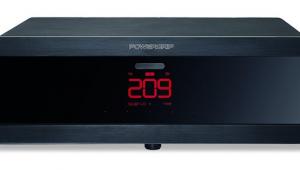Television: Marquee Moon
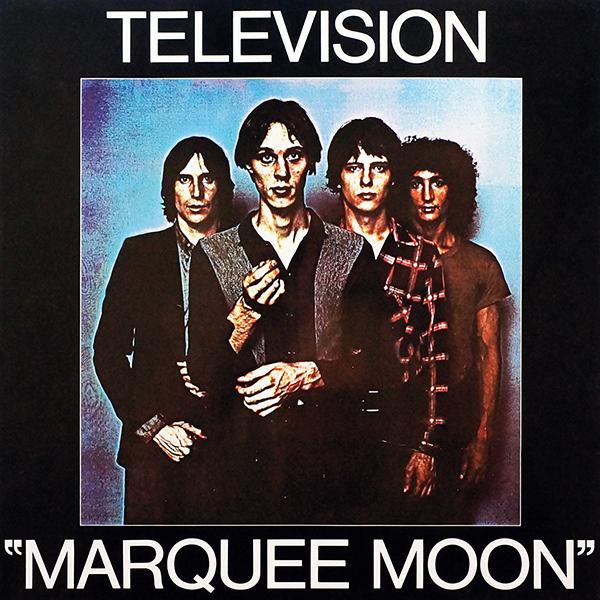
Although ostensibly a band album, Television’s 1977 debut owes much to the vision of frontman Tom Verlaine. Steve Sutherland tunes in as the 180g reissue drops
There’s a quote attributed to Brian Eno that says: ‘The first Velvet Underground album only sold 10,000 copies, but everyone who bought it formed a band’.
Television’s Marquee Moon is a bit like that. Very few people bought it and although it was such a complex curate’s egg that I doubt many bands formed because of it, the album is famous for being one of the most written-about, talked-about and lauded albums of all time.
Critics’ choice
The word genius gets bandied about a lot when journalists get to grips with this set. As if by some divine ordination, they are compelled to write stuff like: ‘Television’s extraordinary debut album casually transcends both hype and generic pigeon-holing... it is arguably one of the finest recordings of all time’. Or: ‘You don’t simply buy Marquee Moon, you invest in it. And it gives remarkable interest’. And so on and so forth.
It’s a critics’ album then, one of those recordings that conveniently hovers on the brink of being ignored by the public-at-large just enough to bestow upon it the honour of being treated as a cause célèbre.
As you can imagine, this makes it kinda tough for me to weigh in right now with anything new to say about its musical pedigree. I searched online for a dissenting voice to almost no avail, the sole naysayer being the legendary American rock writer Lester Bangs who said he didn’t like it because it sounded like The Grateful Dead. Which it does, a bit. But what’s not to like about that, Lester?
Anyway, a whole bunch of head-scratching eventually led to the discovery that, although its musical technique, heritage and inspirational qualities have been mined to exhaustion, not a great deal has been discussed about its impulses and motivations. So here goes.

If there’s one thing virtually guaranteed to break up a band, it’s fraternal rivalry. The battling Gallagher bros tore Oasis apart, the Davies’ bros antipathy did for The Kinks. The Everlys, the Fogertys in Creedence, the Robinsons in Black Crowes… all cases where the proximity of egos couldn’t take the strain. Imagine, then, how much worse it is for twins, warring from the womb, genetically primed for combat.
The Miller’s tale
Thomas Miller had a twin brother, named John. He wasn’t in a band with Tom or anything like that but Richard Lloyd, who was, reckoned it was the existence of John and his effect on Tom that went a long way to explaining the singular identity of Marquee Moon. ‘Tom has a sibling rivalry thing going on that had already started in the womb. It’s the only psychological motive I can come up with for some of Tom’s behaviour’, said Lloyd.
Tom, in case you hadn’t twigged, is Tom Verlaine, the founder and uncompromising musical dictator of Television. He changed his surname from Miller to mirror that of the absinthe-guzzling decadent symbolist French poet Paul Verlaine to sound sexier, show off his intellectual credentials, signify a desired level of pretension, and distance himself from his background.
In other words, he invented himself a new persona, and the main characteristic of this creation was megalomania. Verlaine exhibited an iron-clad egotism and a complete refusal to compromise. In the earliest incarnation of the band, the bass player was Richard Hell, a flamboyant character credited with founding the trend for ripped clothes that soon became part of the punk uniform. He wasn’t the greatest bassist but that wasn’t the reason Verlaine chucked him out. Hell was a crowd pleaser, acting wild during gigs and attracting all the attention, a role Verlaine insisted was his. Hissy fits ensued and the bassist was duly replaced by the more malleable Fred Smith.
Then there was the drummer, Billy Ficca. He was a showman who liked to chuck in a paradiddle or two. Verlaine also wanted him out, but Lloyd managed to convince Verlaine that he should stay by pointing out that many of the great bands had character drummers – Ginger Baker in Cream, Keith Moon in The Who, Mitch Mitchell in The Jimi Hendrix Experience.
Jammed to perfection
Lloyd navigated his way through his own stormy relationship with Verlaine by acquiescing to the role of secondary guitarist and, although Marquee Moon was jammed to perfection before it was recorded, hundreds of rehearsals and gigs hammering it into shape, Verlaine allowed no-one else a writing credit. Indeed, when the band signed to Elektra, he attempted to make it a solo deal behind his bandmates’ backs with the rest as hired hands – a ploy that didn’t come off.
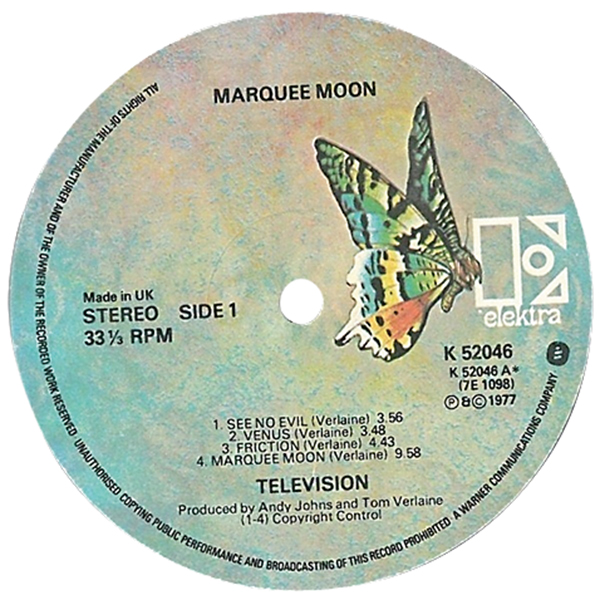
Once the album was ready to record, there was the question of finding a suitable producer. Guess what? Verlaine wanted to do it himself. The band had already tried to work with Brian Eno, but Verlaine found Eno’s direction too overbearing. Elektra finally acceded so long as Verlaine agreed to a co-pilot, so famed engineer Andy Johns was hired as a safe pair of hands.
War is over
This all makes Verlaine out to be a monster, but if that’s what it takes, that’s what it takes. Lloyd has described the guitar solos upon which Marquee Moon’s reputation is based as ‘wars’, especially those on the title track. Crescendo after crescendo, the fretwork that Lester Bangs took such exception to is some of the most thrillingly stratospheric ever committed to tape.
The album’s songs are angular, sharp and self-consciously arty, deliberately obscure, sometimes peppered with a wry sense of humour like the line about falling into the arms of Venus de Milo. It’s poised and posed, its references impeccable from John Coltrane to The Shangri-Las.
Nothing Verlaine ever did after Marquee Moon was remotely as brilliant. Television’s follow-up album, Adventure, was okay, but no great shakes. According to Lloyd, by now Verlaine was so convinced of the perfection of his powers that he refused to share time and space with anyone to prep the album, so the band went in underprepared. They soon split. Verlaine then released eight reasonably unremarkable solo albums, which preceded an ill-advised and short-lived reunion of the group in 1992. The spark was out.

John Miller died suddenly in 1984. His twin Tom in 2023. Marquee Moon still stands, however, as one of the greatest debut albums of all time, a work of undeniable... Oops, I almost said genius.
Re-release VerdictFirst released in 1977 on LP, cassette and 8-track cartridge, Marquee Moon is now available on 180g vinyl through Elektra/Rhino Records [812279 7158], with remastering by Greg Calbi and Lee Hulko at New York-based Sterling Sound. Recorded in the same city’s A&R Studios in September 1976, the set’s eight songs – including the near-ten-minute title track – are split evenly across the LP’s two sides. The original album artwork naturally gives prominence to Tom Verlaine... HFN
